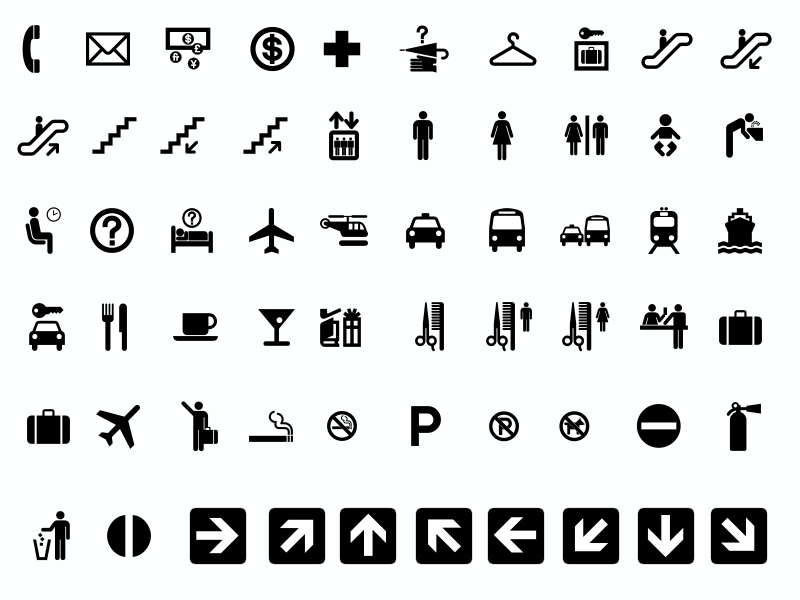Before written language, symbols were used to convey messages and relate stories. In modern times, people have come to rely on symbol signage to navigate their way through unfamiliar locales. In the digital world, emojis have become universal symbols, pre-cursors to symbol signage. However, prior to the 1970’s symbols in the US were not standardized, creating confusion for travelers.
In our multi-cultural global society, today’s symbols are more important than ever. The need for a universal means of communication extends to our workplaces, public spaces such as hospitals and schools and pedestrian streetscapes. Symbols have the unique ability to cross borders and language barriers.
In the late 1970’s the US Department of Transportation worked collaboratively with the American Institute for Graphic Design to devise a unique set of symbols for travelers to the US. As a result, a set of 50 symbols were developed primarily for use in transportation hubs and at international events such as the Olympics. The symbols were designed to bridge language, age, culture and gender. Universally understood, these symbols represent basics, including identifying bathroom facilities, escalators, elevators and stairs, food, handicap ramps, exits & entrances and more. The symbols are free of copyright and download. They have been standardized and catalogued for use by sign companies.

Aside from faithfully reproducing the symbol, signage must be strategically placed for maximum legibility. Material considerations, (especially for outdoor applications), clear imprinting and careful use of background colors should be factors when creating signage.
Choosing an international sign partner like TISA ensures your signage will be manufactured to the highest standards. Expert installation teams are positioned around the globe to put your signage where you need it.
Society is becoming increasingly more diverse. Universal symbol signage is more relevant today than ever – not just at airports and train stations but as communication aids wherever people engage with their environment.
Contact an international signage expert today to review your needs worldwide.
